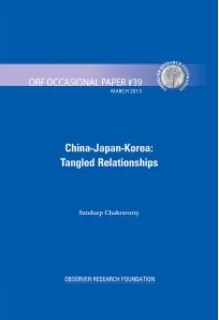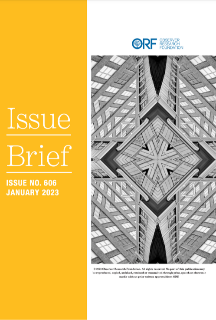Buckley, Chris, “China says Japan ties anniversary ruined by island row, Reuters, September 21, 2012
http://www.reuters.com/article/2012/09/21/oukwd-uk-china-japan- idAFBRE88K0B920120921?feedType=RSS&feedName=worldNews&utm_sour ce=feedburner&utm_medium=feed&utm_campaign=Feed%3A+reuters%2FAF RICAWorldNews+%28News+%2F+AFRICA+%2F+World+News%29
Choe, Sang-Hun, Japan seeks to mend strained ties with Seoul, International Herald Tribune, January 5-6, 2013.
Flacker, Martin and Johnson, Ian, Sleepy Islands and Smouldering Dispute, New York Times, September 20, 2012, http://www.nytimes.com/2012/09/21/ world/asia/japan-china-trade-ties-complicate-island-dispute.html?pagewanted=all
Fackler, Martin and Johnson Ian, Showdown over islands threatens business ties, International Herald Tribune, September 22, 2012.
Gupta, Rukmani, “Tensions in the East China Sea: A test case for the US 'Pivot'? IDSA Comment, September 14, 2012
Gabusi, Giuseppe, The Senkaku/Diaoyu dispute: can China and Japan trust one another? East Asia Forum, November 3, 2012 http://www.eastasiaforum.org/ 2012/11/03/the-senkakudiaoyu-dispute-can-china-and-japan-trust-one- another/#more-29831
Han, SeungSoo, Heeding History in East Asia, Independent of Bangladesh, November 28, 2012
Hakoda, Tetsuya and Higashioka, Toru, Lee's visit to Takeshima came as a bolt out of the blue for Japan, Asahi Shimbun, August 11, 2012 http://ajw.asahi.com/ article/asia/korean_peninsula/AJ201208110058
Hayashi, Yuka, Abe resolves to take tough line on China, Wall Street Journal, November 22, 2012
Jo,Yanghyeon, The Korea-China-Japan Trilateral Summit and Northeast Asian Security Cooperation”, paper presented at India-Japan-South Korea Trilateral Meeting, New Delhi, June 29, 2012.
Khan, Shamshad A, Japan-South Korea Diplomatic Standoff over Takeshima/Dokdo, IDSA Comment, August 14, 2012
Kim, Jae Cheol, China–DPRK's special relationship of convenience, East Asia Forum, July 5, 2011
http://www.eastasiaforum.org/2011/07/05/china-dprk-s-special-relationship-of- convenience/
Liank, Yan, Words to soothe Asian passions, International Herald Tribune, October 6-7, 2012
Makito, Saya, The Sino-Japanese War and the Birth of Japanese Nationalism, International House of Japan, 2011
Medcalf, Rory, The Indo-Pacific strikes back, The Interpreter, Lowy Institute of International Policy, November 20, 2012
http://www.lowyinterpreter.org/post/2012/11/20/The-Indo-Pacific-strikes- back.aspx
Nalwa, Preeti, Japan-South Korean War Memories and Territorial Disputes: A Dangerous Mix, IDSA Comment, August 27, 2012 http://www.idsa.in/ idsacomments/JapanSouthKoreanWarMemoriesandTerritorialDisputes_PreetiNa lwa_270812
Parmar, Sarabjeet Singh, Securing Maritime Security and Fostering Cooperation”, paper presented at India-Japan-South Korea Trilateral Meeting, June 29, 2012, New Delhi.
Rathus, Joel, China-Japan-Korea trilateral cooperation and the East Asian Community, East Asia Forum, June 15, 2010
http://www.eastasiaforum.org/2010/06/15/china-japan-korea-trilateral- cooperation-and-the-east-asian-community/
Smith Sheila A., Japan, China, and the Tide of Nationalism, Council on Foreign Relations, September 19, 2012
http://www.cfr.org/asia/japan-china-tide-nationalism/p29080
Soh, Sarah C., Japan's Responsibility Toward Comfort Women Survivors, PRI Working Paper No. 77, May 2001.
Tanaka, Hitoshi, “Japan-ROK relations: defusing tensions to build a regional partnership”, East Asia Insights Vol. 7 No. 4 October 2012
The Asahi Shimbun, Japan and South Korea need calm approach to territorial issues, August 3, 2011 http://www.asahi.com/english/ TKY201108020267.html.
The Economist, Islands Apart, September 15-21, 2012
The Economist, Leader, September 22, 2012, page 11
The Economist, Protesting too much, September 22-28, 2012
The Economist, The Senkaku or Diaoyu Islands, Narrative of an empty space, December 22, 2012
The Korea Herald, “Tokyo's nuclear move worries neighbours”, June 22, 2012 http://www.koreaherald.com/view.php?ud=20120622001028
The Yomiuri Shimbun, South Korea goes overboard in denying lawmakers entry, August 4, 2011 http://www.yomiuri.co.jp/dy/ editorial/T110803004887.htm.
Wallerstein, Immanuel, The Korean Peninsula: The future of a geopolitical nexus”, Yale global Online, October 2012
Westad Odd Arne, Why China and Japan can't get along, International Herald Tribune, January 7, 2013
Yokota, Takashi, Japan vs. South Korea, Diplomacy on the Rocks”, Newsweek, September 10, 2012.
Zakaria, Fareed, China Syndrome, Time Magazine, November 26, 2012

 PDF Download
PDF Download





 PREV
PREV


